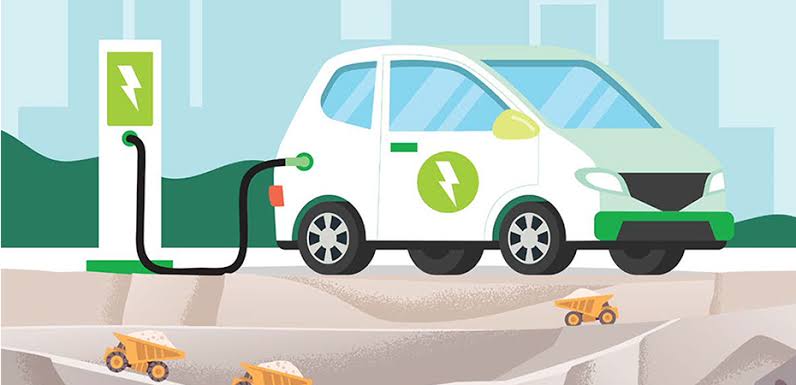
The Advent of EV (Part II)
When we think of Electric Vehicles, the first thing that comes to mind, undoubtedly, is Tesla. Tesla is a company that has taken the world by storm. From electric cars to solar panels, Tesla has become a household name synonymous with innovation and a greener future. Founded in 2003, the company has come a long way and has become a driving force in the electric vehicle market. One of the key factors contributing to Tesla’s success is its battery technology.
Tesla’s electric cars are powered by high-capacity lithium-ion batteries, which are designed to provide long-range and quick charging times. These batteries have revolutionized the electric vehicle industry by making it possible to create cars with a range of over 300 miles on a single charge. The batteries are made up of thousands of small cells that are connected to form a large battery pack.
One of the critical reasons Tesla has been quite successful with their electric vehicles is their focus on design and performance. The company’s first car, the Tesla Roadster, was designed to be a high-performance sports car that just happened to be electric. The Roadster was a game-changer for the electric vehicle industry, proving that electric cars could be as fast and powerful as their gasoline-powered counterparts.
After the success of the Roadster, Tesla focused on developing more affordable electric cars, starting with the Model S. The Model S became one of the most popular electric cars on the market quickly, thanks to its sleek design, luxurious interior, and impressive performance. The Model S was also one of the first electric cars to offer a range of over 300 miles on a single charge, making it a practical option for long-distance driving.
Tesla has continued to improve its battery technology with each new model it releases. The Model X and Model 3 offer impressive range and performance, making them popular options for consumers looking to switch to electric vehicles. Tesla’s newest car, the Model Y, is a crossover SUV that offers the same impressive performance and range as the Model 3.
In addition to its electric cars, Tesla is also developing new battery technology that could revolutionize the energy industry. The company’s Powerwall and Powerpack systems are designed to store energy from solar panels, making it possible to power homes and businesses with renewable energy. Tesla’s battery technology has the potential to reduce our reliance on fossil fuels and help create a greener, more sustainable future.
Aside from Tesla, an independent inventor and former NASA employee, Stanley Meyer is known for inventing the water-powered car, which he claimed could run on water instead of gasoline. Although his technology was never commercialized, it drew attention for its potential to reduce dependence on fossil fuels and minimize environmental pollution. Meyer’s device used a process known as electrolysis to break down water into its constituent elements (hydrogen and oxygen), which were then combusted to produce energy to power the car. While this technology did not gain widespread acceptance due to concerns over its practicality and reliability, there is a possibility that alternative forms of clean energy, such as hydrogen-powered cars, could emerge in the future and compete with electric vehicles in the automotive industry. However, significant investment and development would have been required to make such technologies commercially viable and widely available to the public.
The future of electric vehicles (EVs) appears to be highly promising as they continue to gain popularity and become increasingly ubiquitous. From a scientific perspective, a range of developments is expected to shape the future of EVs, including advancements in battery technology, driving range, and charging infrastructure.
One notable prediction for the future of EVs is the increasing prevalence of solid-state batteries, projected to replace the current lithium-ion batteries commonly used in most EVs today. Solid-state batteries are anticipated to offer enhanced safety, greater energy density, and faster charging times than traditional lithium-ion batteries. Such improvements are expected to drive down the cost further and improve the performance of EVs, thereby increasing their accessibility to a broader range of consumers.
Another significant scientific projection is that the driving range of EVs is set to rise considerably. Estimates suggest that, by 2025, most EVs will be capable of travelling up to 500 miles on a single charge, thereby addressing one of the main concerns consumers have about EVs: range anxiety or the fear of running out of battery while driving.
Finally, with the installation of more charging stations and the continued reduction of charging times for EVs, it is expected that owning an EV will become increasingly convenient. Some estimates indicate that EVs could make up approximately 50% of all new car sales by 2030, signalling a significant shift away from gasoline-powered vehicles. Overall, the future of EVs looks bright, with ongoing technological and infrastructural advancements poised to drive their growth and adoption in the coming years.
Written by Soham Sadhukan and Kenneth Stephen for MTTN
Edited by Adeela Fathima for MTTN
Featured Image by E-Waste Monitor
Leave a Reply
You must be logged in to post a comment.